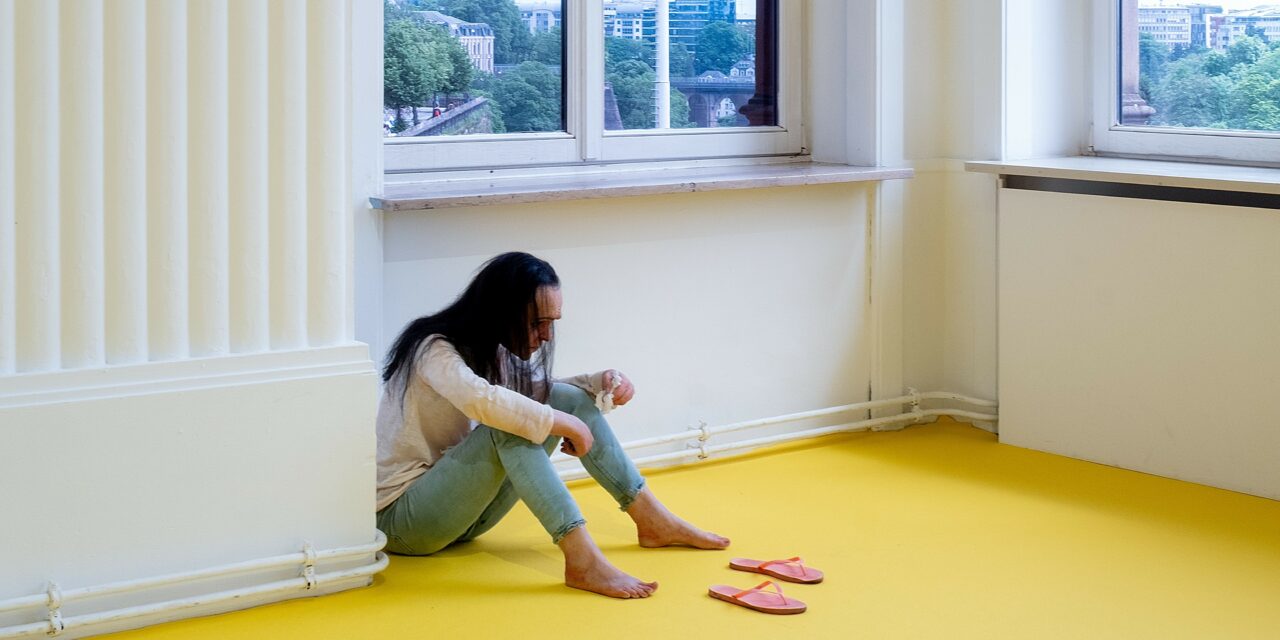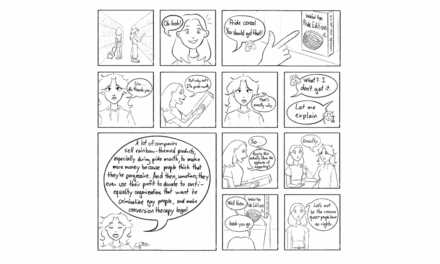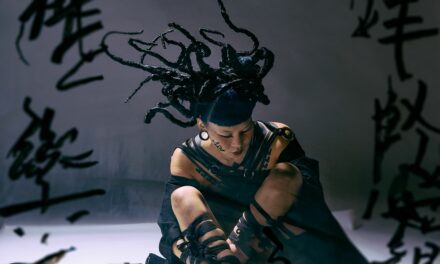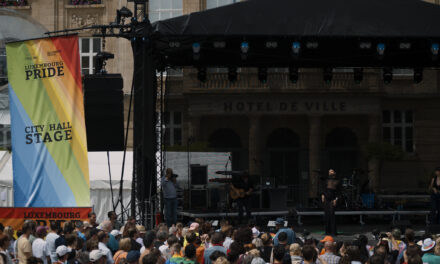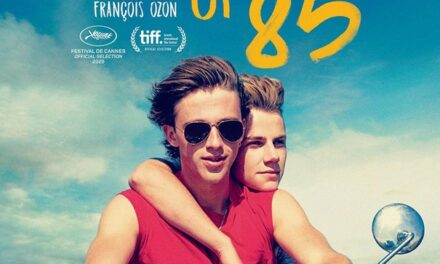It’s Pride month, it’s Pride week, and many of us are spending time reflecting on the event itself — its meaning, its impact. What achievements can we celebrate, and what areas require change, cessation, or continuation? What is our individual contribution? And mainly, what endures beyond these reflections? While you might find parts of the answer at various Pride festival events, where you can talk to representatives working in queer activism and culture, perhaps we could look further, beyond Pride.
I believe that what’s outside defines what’s inside, and the barrier in between is where magic and decisions happen. I often use photography as an analogy. A photograph is a framed snapshot of a fragment of something. If you see a photo of a hand, you know the rest of the body is there, just beyond the frame. Similarly, we can peek beyond the frame of Pride and seek analogies in broader contexts to guide our own investigations. And I have a great starting point for you.
So, what remains? This question is explored by 32 international artists in the art exhibition My Last Will, curated by the German-Luxembourg artist duo M+M (Marc Weis and Martin De Mattia) at Casino Luxembourg — Forum d’art contemporain. This question has become especially relevant in recent years, marked by a global pandemic, accelerated digitalization, wars raging not far from our borders, and a climate crisis often disregarded by those in power.
The responses are showcased both in the art book “My Last Will”, which is a conceptual artwork in itself (available for purchase), and within the exhibition. The book requires readers to slow down, as its pages are sealed and need to be slit open with a knife one by one — a process that can easily take over an hour. This attention to the present moment is reflected in other works as well. One of the first you encounter upon entering the gallery is a monumental LED display in the lobby, rapidly counting numbers. Entitled “Death Counter” by Santiago Sierra, the piece is unsettling once you realize the numbers represent global fatalities. It prompts contemplation: could I be just another insignificant number, or is it worth trying to make a difference?
When you enter the main gallery on the first floor, you are immediately challenged to reflect on your own values and nature. The hyper-realistic robot doll named Annelies, created by the artist duo L.A. Raevens — twin sisters — confronts you. Annelies serves as a third twin, likely outliving her biological counterparts. (Tip for viewers: try gently comforting her by touching her shoulder, …you might be in for another chill.) This concept of an enduring memory is echoed in the film “Madri” by another duo, MASBEDO. The main scene features an empty old cinema, where close-ups of elderly women’s veins, wrinkled hands, arms, and faces are projected on the screen. The film is presented without sound, offering minimalistic and intimate body images in an empty space. It’s a beautiful tribute to motherhood and, by extension, humanity itself.
Some artists continue their political fights, such as Colombian artist Iván Argote or Lara Almarcegui. By portraying empty plinths of statues, like that of George Washington, with plants sprouting from them, Iván questions and directly comments on the ongoing need to celebrate colonial figures and the domination of one culture over another. He hopes for an end to this practice and a change in perspective. On the other hand, Lara focuses on land ownership and the preservation of natural resources. She holds rights to pristine nature reserves near Oslo, aiming to prevent companies from mining and destroying these areas, which have remained untouched for millions of years.
Other artists delve into self-reflection, like in Keren Cytter‘s film essay called “Psycho the rapist.” It features a guy lying on a therapist’s couch, introducing himself as Keren Cytter. Is he a version of the Israeli artist – an alter ego? Amidst confusion and identity crises, the idea of having a clear “last will” seems impossible. Questions arise: Who am I really? What control do I have? And importantly, how does all this affect me and others?
One aspect I especially appreciate about the exhibition is how other artists complement works like Iván’s by offering guidance on navigating these complex issues. Luxembourgish artist and musician Su Mei-Tse exemplifies this approach. Her piece features two hands shaping a vessel on a potter’s wheel. The vessel sometimes collapses into an imperfect form, while other times it remains intact. Interestingly, the process is continuous and never ends, emphasizing the value of being present and attentive to the moment’s demands.
The role of humor in helping us cope with life’s challenges is highlighted in Olaf Breuning‘s “Untitled”. This six-part photo series features a sequence of selfies in which the artist’s face gradually disappears, until the final image reveals a small yellow thumbs-up emoji instead of his face. While some might interpret this as cynicism, the piece underscores how humor can be a vital tool for resilience among constant difficulties. Curators themselves tried to add some lightness to the space, specifically by using a bright yellow carpet that connects the individual exhibition spaces. This color of choice acts as a positive grounding element, and introduces a sense of optimism or at least neutrality, offering a refreshing counterbalance to the more serious subject matters.
The M+M have brought together a broad range of creations, showcasing diverse perspectives and approaches of people with different social, cultural, and religious backgrounds. A central theme of the exhibition is the extent to which we all consciously shape who will remember us and how. Personal doubts and fears are real, making it easy to feel marginalized or alone. However, the artists’ works remind us that legacy is not just a passive aftermath of our lives, but an active, ongoing process. By engaging with the present and considering our impact, we help create a future narrative that honors our existence and actions, regardless of our struggles and beliefs. To answer the question “What remains?” is to seek meaning and significance in our lives, a pursuit that is a universal undertaking shared by all humans.
The exhibition My Last Will is on display at Casino Luxembourg until September 8th, 2024.
Participating artists: Loukia Alavanou, Lara Almarcegui, Carlos Amorales, Ivàn Argote, John Bock, Mohamed Bourouissa, Olaf Breuning, Chicks on Speed, Clément Cogitore, Keren Cytter, Marcel Dzama, Hanakam & Schuller, Su Hui-Yu, Mire Lee, Erik van Lieshout, Renzo Martens, MASBEDO, Christodoulos Panayiotou, Cesare Pietroiusti, Agnieszka Polska, PPKK (Schönfeld & Scoufaras), L.A. Raeven, Ricarda Roggan, Santiago Sierra, Shelly Silver, Su-Mei Tse, Raphaela Vogel, Simon Wachsmuth, Clemens von Wedemeyer, Tobias Zielony, Thomas Zipp, and Portia Zvavahera.
Photo: Jessica Theis

